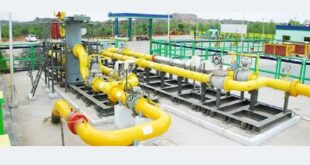- The National Statistical Office’s latest release of GDP data estimates a further deceleration in growth in the October-December 2022 quarter, a slowdown that the government’s Chief Economic Adviser (CEA) has attributed largely to an upward revision in the year-earlier period’s figures.
- Gross domestic product is posited to have expanded by 4.4% from the year-earlier quarter, an appreciable deceleration from the 6.3% pace logged in the preceding three months and lagging the 5.2% growth of the October-December 2021 period as well.
- Gross Value Added (GVA) growth slowed to 4.6%, from the second quarter’s 5.5%, as the estimates for manufacturing suggested a continuing contraction (minus 1.1%), albeit narrower than July-September’s shrinkage (minus 3.6%).
- Sequentially too manufacturing appears to have shrunk (minus 2.4%). Growth in three of the five services sectors including the crucial trade, hotels, transport and communications as well as the financial, real estate and professional services categories also slowed sharply from the second quarter, signalling that the pent-up demand seen in the contact-intensive sectors, which had been worst hit by the COVID-19 pandemic, had begun to wane.
- On the expenditure front, the mainstay private final consumption expenditure lost some momentum with its percentage share of overall GDP easing to 61.6%, from 63% in the year-earlier quarter.
- That this happened in the traditional festival quarter when consumption spending usually peaks ought to be cause for concern and suggests that the relentless pace of retail inflation is eroding consumptive capacity.
- The CEA, however, has suggested that if the year-earlier manufacturing output data used to calculate the year-on-year growth had remained unrevised, the sector would have actually logged an expansion of 3.8%, instead of the 1.1% shrinkage that the NSO estimates show.
- Similarly, he has asserted that private consumption spending would have logged third-quarter growth of about 6%, instead of 2.1% that the latest NSO release indicates, if the data prior to revision had been used instead.
- Still, even at 6%, consumption spending growth would lag the second quarter’s 8.8% expansion, making it clear that momentum is flagging.
- Gross fixed capital formation, which reflects investment by businesses in new capacity, contracted sequentially, with its share of GDP slipping to 31.8%, from 34.2% in the July-September period.
- With global demand weakening considerably and unlikely to recover over the course of 2023, and the risks from likely unfavourable weather conditions raising uncertainty over farm output in the coming months, policy makers will need to do all they can to buttress domestic demand.
- That the data revisions have essentially made it that much harder to draw meaningful conclusions, spotlights the challenges to crafting policy solutions, as top central bank officials have frequently pointed out.
SOURCE: THE HINDU, THE ECONOMIC TIMES, PIB
 Chinmaya IAS Academy – Current Affairs Chinmaya IAS Academy – Current Affairs
Chinmaya IAS Academy – Current Affairs Chinmaya IAS Academy – Current Affairs



